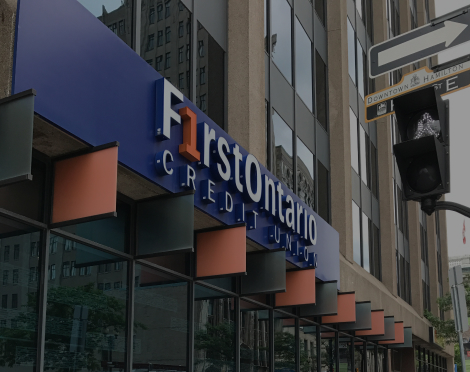Rates
Let your money do the work for you with great rates.
Let your money do the work for you with great rates.
There's more to a credit union than just banking.

We know that strong financial literacy is key to making informed decisions about money.
We offer industry leading business account rates.
Connect with our Business Banking team

Located at 1 James Street South in Hamilton.
Meet our Wealth Team
Our wealth advisors are here to provide expert guidance and support.

We know that strong financial literacy is key to making informed decisions about money.

We know that strong financial literacy is key to making informed decisions about money.

Debt is often associated with negative feelings and we know we are supposed to avoid it. But there are times when debt is necessary to get to where you need to go.
Good debt, like a mortgage or student loan, can increase your net worth or impact your life in a positive way. Bad debt usually involves borrowing money you didn’t have in the first place to purchase depreciating assets or things you might not need – like an expensive dinner out or the newest exercise bike.
Be sure to pay down high interest debt first so you don’t keep adding to the pile. Once you have a handle on it, you can begin thinking about saving. A great way to start is by opening a High Interest eSavings Account and setting up automatic reoccurring payments.
By setting up automatic savings, you’ll get closer to your financial goals without thinking about it. Our very own Dave Schurman, speaks about good debt vs bad debt during a FinTips episode.


Regular checkups will give you a good idea of where you are spending your money – so take a look at the transactions in your accounts and on your credit cards. Once you’ve crunched the numbers, you may find ways to reduce your spending.
Are you buying things you don’t need? Can you make your own coffee instead? Can you cut costs on your cell phone plan? When you keep an eye on where your money is going, you are more likely to stay within your budget and you might even find some extra cash to put into savings.
Ways to reduce spending is a great resource to help you learn how to curb unnecessary spending, reduce your expenses, and make your money go further.
Watch previous webinars and episodes of our financial literacy series' Finance Friday and Wealth Wednesday.
Privacy and security • Legal • Accessibility statement • Market Conduct Code • View all online policies • Site map
FirstOntario Credit Union © Copyright 2025